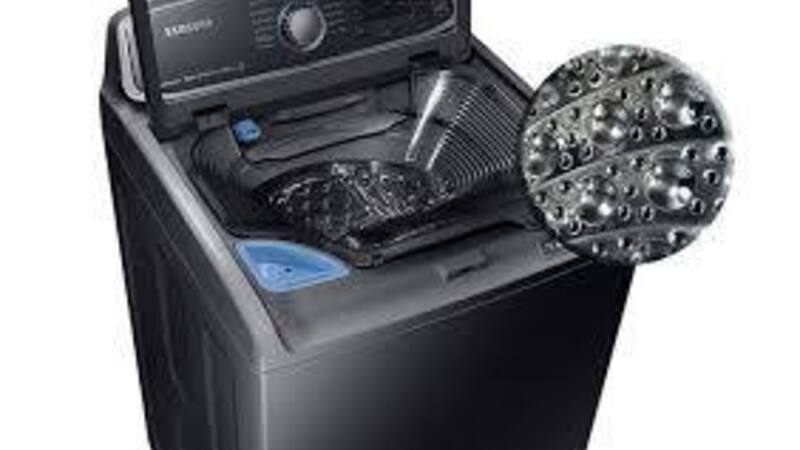Understanding the Importance of the Washer Filter
Samsung washer filter location washing machine serves a vital purpose. It traps dirt, lint, hair, and other debris that comes off your clothes during the wash cycle. Over time, the filter can become clogged, which can lead to several issues like slow drainage, water leakage, and even damage to your washer. Maintaining the washer filter is important for the following reasons:
Improved Drainage: A clean filter ensures that water drains properly at the end of each cycle.
Prolonged Machine Life: Regular cleaning helps prevent wear and tear, thus extending the life of your washer.
Better Cleaning Performance: With a clean filter, the washing machine can perform more efficiently, ensuring that your clothes come out cleaner.
Avoid Costly Repairs: Keeping the filter clean can prevent major breakdowns, saving you money on repairs.
Knowing the location of your Samsung washer filter and cleaning it regularly will prevent these problems from occurring. Contact us for more details
Common Locations of the Samsung Washer Filter
The location of the Samsung washer filter can vary depending on whether you have a front-load or top-load model. Here’s a breakdown of the common filter locations for each model type.
Front-Load Samsung Washers
Most front-load Samsung washers have their filter located in a convenient spot at the bottom front of the machine. This design makes it easier to access and clean regularly.
Access Panel Location: Look at the lower portion of the washer’s front panel. You will see a small square or rectangular access door.
Opening the Panel: To open the access panel, simply press it to release the latch or use a flat object to pop it open.
Filter Location: Inside the panel, you’ll find the filter, usually located next to the drain hose.
Once you’ve located the filter, it’s easy to remove and clean it.
Top-Load Samsung Washers
In top-load washers, the filter location varies slightly, but it is typically located inside the drum or around the agitator. Here’s how you can find it:
Agitator Models: If your top-load washer has an agitator (the central post in the middle of the drum), the filter is often located beneath it. You may need to lift or unscrew the agitator to access the filter.
Drum Filters: For models without an agitator, the filter is typically found along the edges or in the drum itself. Some filters are attached to the inner wall of the drum and can be pulled out for cleaning.
Lint Filter Variants: Some Samsung top-load washers come with lint filters or mesh screens near the drum’s top or sides. These are easily accessible and should be cleaned regularly.
Step-by-Step Guide: How to Access and Clean the Samsung Washer Filter
Once you’ve identified the location of your Samsung washer filter, the next step is to clean it. Cleaning the filter is a simple process that you can do yourself without professional help. Follow these steps:
Turn Off the Washer
Safety is paramount when dealing with electrical appliances. Start by turning off your Samsung washer and unplugging it from the power source. This prevents any electrical accidents during the cleaning process.
Access the Filter
Depending on whether you have a front-load or top-load washer, access the filter as per the instructions mentioned earlier. If you have a front-load washer, open the access panel at the bottom. For top-load washers, check around the agitator or the drum.
Remove the Filter
Carefully remove the filter by either unscrewing it or pulling it out gently. Be prepared for some water to spill out, especially in front-load models, as the filter is often connected to the drain hose. It’s a good idea to place a shallow dish or towel under the washer to catch any excess water.
Clean the Filter
Once the filter is out, you’ll likely see it covered in lint, hair, and other debris. Rinse the filter under running water to remove all the buildup. If needed, use a soft brush to scrub away any stubborn dirt. For top-load models with lint screens, gently shake off any lint and wash the screen.
Clean the Filter Housing
After removing the filter, check the filter housing for any trapped dirt or debris. Wipe it down with a damp cloth to ensure it’s clean before reinserting the filter.
Reinsert the Filter
Once the filter is clean and dry, place it back in its housing and secure it properly. Make sure it is fitted snugly to prevent water leaks.
Test the Washer
After cleaning the filter and reinserting it, plug the washer back in and run a test cycle. This will ensure everything is functioning smoothly, and there are no drainage or leakage issues.
How Often Should You Clean the Samsung Washer Filter?
Samsung recommends cleaning the washer filter every two to three months. However, this frequency may vary depending on your usage. If you wash large loads frequently or notice any performance issues like slow drainage or unusual noises, it’s a good idea to clean the filter more often. Additionally, cleaning the filter regularly helps avoid:
Water Leakage: Clogged filters can cause water to back up, leading to leaks.
Foul Odors: Debris trapped in the filter can produce bad smells in your washer.
Extended Wash Cycles: A dirty filter can slow down the draining process, causing wash cycles to take longer.
Benefits of Regular Filter Cleaning
Regular maintenance of the washer filter brings several benefits, both in terms of machine performance and cost savings.
Improved Efficiency: A clean filter allows the washer to drain water quickly, ensuring efficient operation.
Prolonged Lifespan: Regular cleaning reduces the strain on the washer, prolonging its lifespan.
Reduced Energy Consumption: With an unclogged filter, the machine uses less energy to complete wash cycles.
Cost Savings: Proper maintenance can prevent expensive repairs or the need to replace your washer prematurely.
Signs That Your Washer Filter Needs Cleaning
Even if you’re following a regular cleaning schedule, certain signs indicate the washer filter may need immediate attention. These include:
Slow Draining: If you notice that the washer is taking longer to drain after a cycle, the filter may be clogged.
Water Pooling: Water left in the drum or pooling around the washer is a clear sign of a blocked filter.
Unpleasant Odors: Bad smells coming from your washer could mean the filter is full of trapped debris.
Noisy Operation: A clogged filter may cause the washer to make unusual sounds, especially during draining.
Common Problems Due to a Clogged Filter
If you neglect to clean the washer filter, you may encounter several problems. Here are some of the most common issues caused by a clogged Samsung washer filter:
Slow Draining or No Draining
A blocked filter prevents water from draining properly, causing the washer to stop mid-cycle or drain water very slowly.
Leaks
Water may back up and cause leaks from the washer’s bottom if the filter is too clogged to allow proper drainage.
Poor Washing Performance
Your clothes may not come out as clean if the washer isn’t draining properly due to a clogged filter.
Odors
Dirty filters often lead to foul smells in the washer, which can transfer to your laundry.
Washer Error Codes
Some Samsung washers will display error codes when the filter is clogged. These codes typically relate to drainage problems and signal that the filter needs immediate attention.
How to Replace a Samsung Washer Filter
In some cases, the filter may be damaged or worn out, making it necessary to replace it. Follow these steps to replace the filter:
Purchase the Correct Replacement Filter: Make sure you buy the right filter for your specific Samsung washer model.
Turn Off the Washer: Always unplug the machine before attempting any repairs.
Access the Filter: Open the access panel or lid to locate the filter.
Remove the Old Filter: Unscrew or pull out the old filter.
Install the New Filter: Insert the new filter into the housing, ensuring it’s fitted securely.
Test the Machine: Run a test cycle to ensure the new filter is working properly and there are no leaks.
Final Thoughts on Samsung Washer Filter Maintenance
Maintaining the Samsung washer filter is a simple yet crucial task that ensures your machine runs smoothly. By regularly cleaning the filter, you can avoid common issues like clogging, leaks, and poor washing performance. Whether you own a front-load or top-load Samsung washer, knowing the filter’s location and understanding how to clean it can save you time, money, and frustration in the long run. The next time you notice a problem with your washer’s performance, remember to check the filter first. Regular filter maintenance will not only keep your Samsung washer in top shape but also improve your laundry experience.


Can you be more specific about the content of your article? After reading it, I still have some doubts. Hope you can help me.
Your article helped me a lot, is there any more related content? Thanks!
I don’t think the title of your article matches the content lol. Just kidding, mainly because I had some doubts after reading the article.
Every weekend i used to visit this website, as i wish for enjoyment,
for the reason that this this site conations in fact
pleasant funny information too.
Your point of view caught my eye and was very interesting. Thanks. I have a question for you.
Can you be more specific about the content of your article? After reading it, I still have some doubts. Hope you can help me.
Your point of view caught my eye and was very interesting. Thanks. I have a question for you.
Your article helped me a lot, is there any more related content? Thanks!
Your point of view caught my eye and was very interesting. Thanks. I have a question for you.